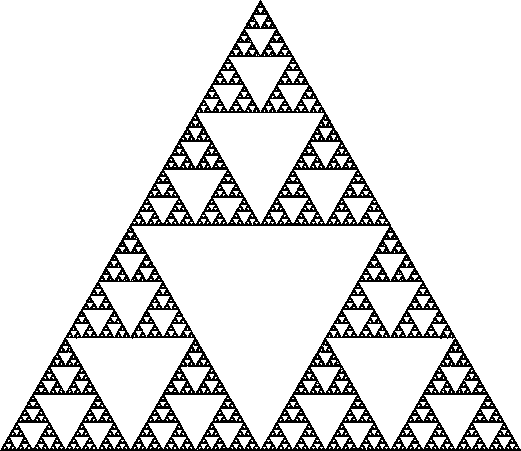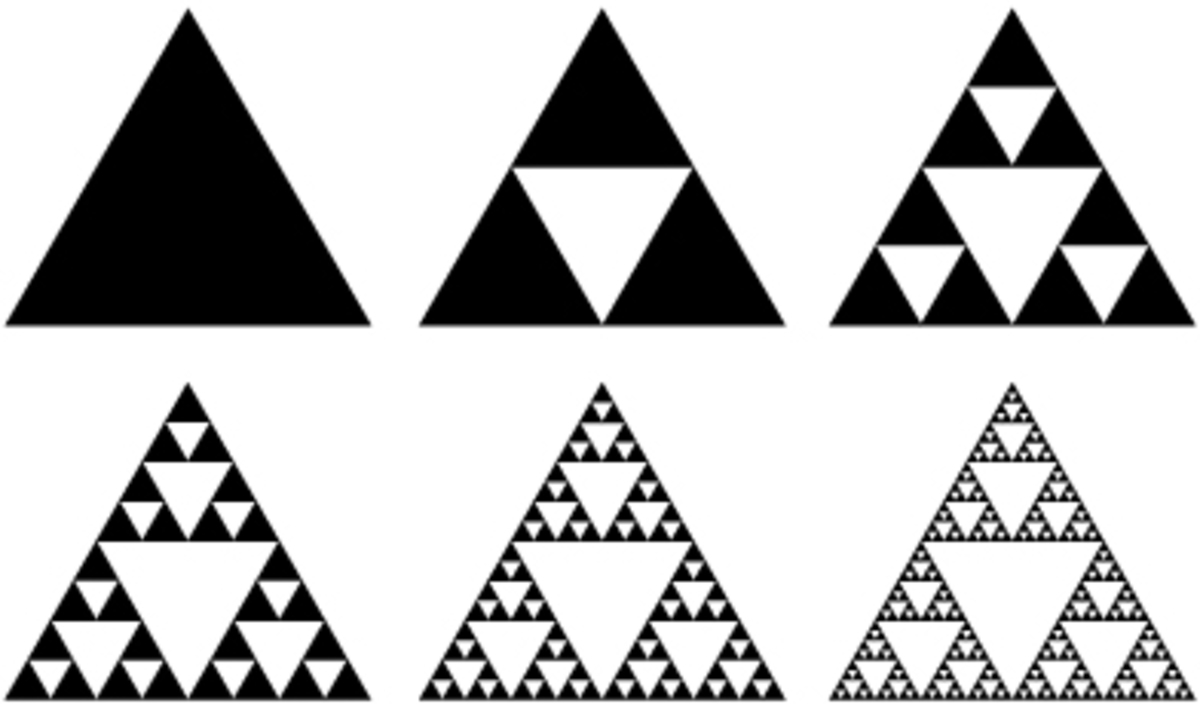Sierpinski Area

This image shows the famous Sierpinski Triangle fractal. If the fractal goes on infinitely, in the limit, what is the area of the black part of this shape as a proportion of the whole triangle?
Assume the image shows a complete Sierpinski triangle.
This section requires Javascript.
You are seeing this because something didn't load right. We suggest you, (a) try
refreshing the page, (b) enabling javascript if it is disabled on your browser and,
finally, (c)
loading the
non-javascript version of this page
. We're sorry about the hassle.
Consider how the area of the initial triangle decreases as we develop the fractal:
As you can see, each iteration decreases the area of the shape by 4 1 , since every solid black triangle is divided into 4 new equal sections, one of which is white. We can express the area of the shape after x iterations as 4 3 x . The Sierpinski Triangle is the result of infinite 'iterations' (since it is a fractal), so the area is 4 3 ∞ = 0 . In other words, the area decreases by a a constant ratio by an infinite amount of times. Because the ratio does not change, the product does not converge on anything bigger than zero. Any positive number ( 0 > x > 1 ) ∞ = 0 .
There is perhaps a more intuitive way of thinking about this. Since this is a fractal, the ratio of the black part of the 'top' triangle to the area of the top triangle must be equal to our answer. However, we can see that we should get a smaller answer for the ratio of the larger triangle, because there is an extra white triangle to factor in (ie. the upper triangle is more 'densely packed' than the larger triangle. So, excluding all negative values, what answer both gets closer to zero and stays the same when multiplied by some ratio? The only answer is 0. ■